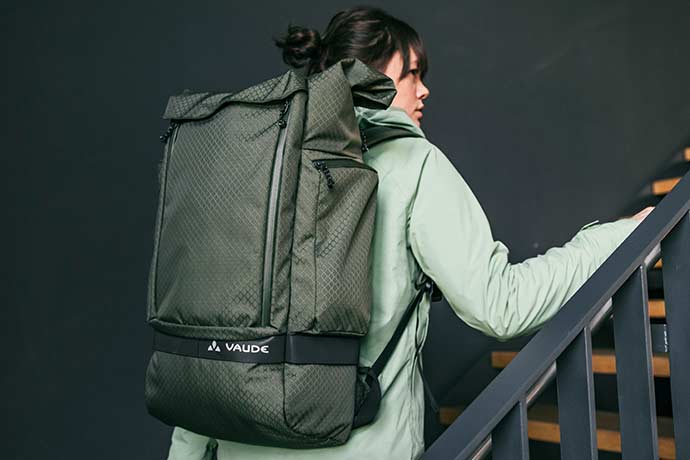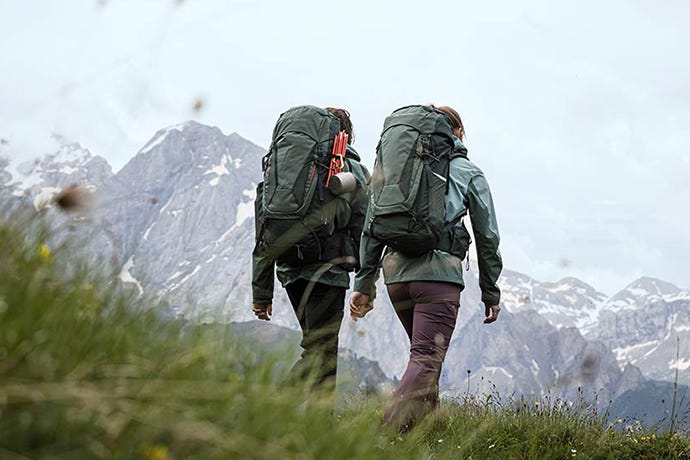3D printing for Outdoor products brings circular economy closer
By using innovative 3D printed back pads, we have developed a concept study of a recyclable backpack with the Novum 3D. This is another big step towards the circular economy and provides us with many new insights for holistic sustainable product development, as ideally a product can be fully recycled back into the production process at the end of its life cycle.
Novum 3D - A prototype for sustainable backpacks of the Future
You can tell at first glance that the Novum 3D is no ordinary . The smooth, undyed and slightly translucent material that makes up the backpack, including the straps, has a decidedly futuristic feel. There are no seams - everything is welded. Instead of foam padding, you'll find almost bizarre geometric structures made of small plastic struts on the back. The Novum 3D could be the prop of a science fiction movie, and indeed it is meant to provide a glimpse into the future. It is a concept study to try out radical new design approaches and make them tangible.
Only ten copies were produced, which are not intended for sale but will provide insights for future products in our VAUDE range. Our resourceful minds in the Innovation Team are not only concerned with developing a functionally better backpack, but first and foremost with making progress in sustainable production processes and taking a big step towards a true circular economy. With our first recyclable backpack, we're proving that comfort, function and sustainability don't have to be at odds with each other.
Well ventilated and comfortable thanks to innovative 3D printed back padding
But how exactly can sustainability and comfort be reconciled? The eye-catching lattice structures of the back padding are a key component. They come from a 3D printer at our cooperation partner Oechsler AG. At first glance, they resemble honeycombs. But if you take a closer look, you'll notice that there are no closed cells separated by walls. Instead, countless plastic lattice struts span a three-dimensional network through which air can flow just as well as it allows our observing gaze to pass. But improved ventilation is only one advantage of these promising new cushions over classic foam. In addition, by selectively varying the lattice structure and the thickness of the bracing, we can divide the compliance of the pads, virtually seamlessly, into zones of varying firmness. For example, the padding can be firmer at the hips, where the weight of a full backpack exerts more pressure, than at the mid and upper back. Some cyclists* are already familiar with the technology from saddles, where pressure distribution could be optimized in the same way.
The 3D printed back cushions are a crucial part of the Novum 3D.
What opens up new possibilities in comfort also helps with sustainability. The open 3D structure with its honeycomb structure is by nature, a very stable form, with the least possible use of materials. This saves weight on the backpack and resources in production. Kai Vogt, Head of the Innovations Department, emphasizes another aspect:
"With 3D printing, the additive printing process also plays out its advantages: There is no excess or waste."
The plastic used (thermoplastic polyurethane or TPU for short) can also be recycled and processed into new products. An important aspect that led the VAUDE Inno team to also rethink the other components of a backpack from scratch.
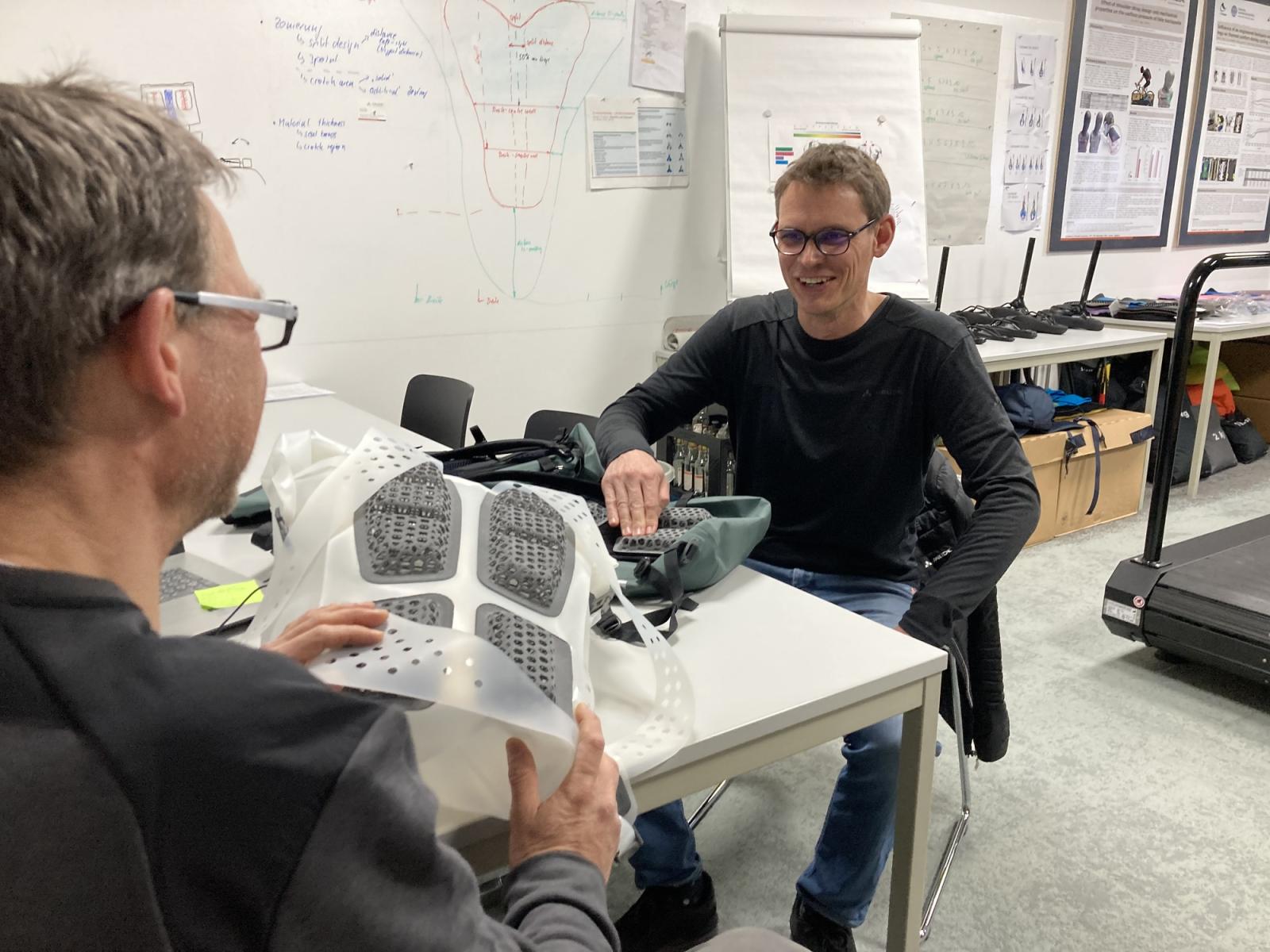

The first recyclable backpack thanks to single-variety Materials
There is a good reason why the shoulder straps, straps, hip belt and the actual pack sack of the Novum 3D are made of the same material. This means that the components do not have to be separated at great expense in order to be able to recycle the backpack at the end of its life cycle. The material used here looks different from the back padding, but it is also TPU. And the plastic comes up with another feature that makes it a good alternative to textiles: it can be welded.
"In this way, we were able to produce a single-variety backpack completely without seams."
kai Vogt explains. This is because the sewing thread alone would be another material that would have to be separated before it could be recycled in a single-sort process. This removes one of the biggest hurdles that have stood in the way of genuine recycling of outdoor equipment to date. Backpacks are usually made of a variety of materials that can only be separated from each other with immense effort or practically not at all: different materials yarns, tapes, foams, metal and plastic parts. Often, materials are used that even individually could not be recycled to the same quality. The Novum 3D, on the other hand, consists almost entirely of TPU. We are talking about a mono-material backpack. For the sake of the environment, the main material is undyed. However, all non-TPU parts, such as the aluminum back stays, can be removed very easily.
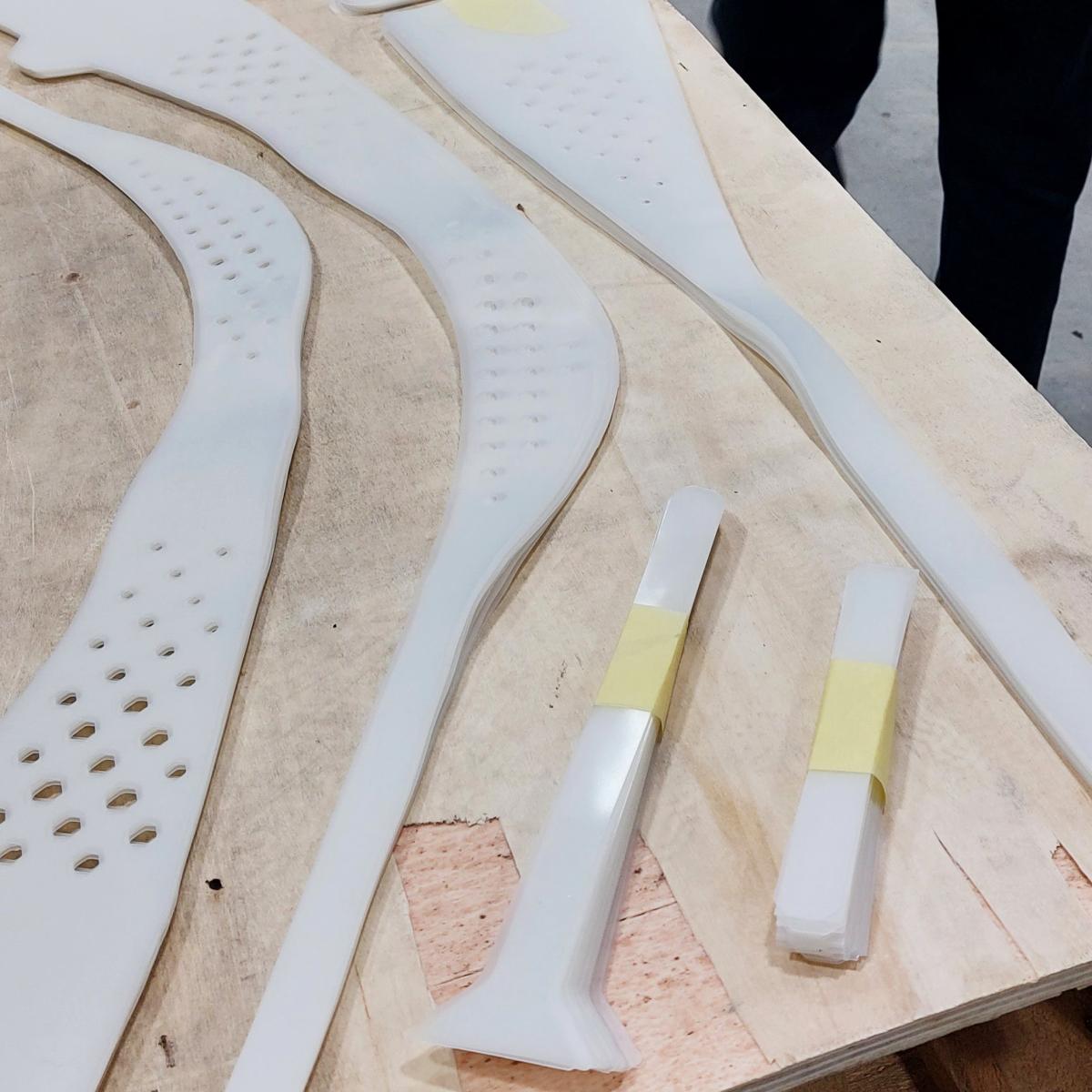

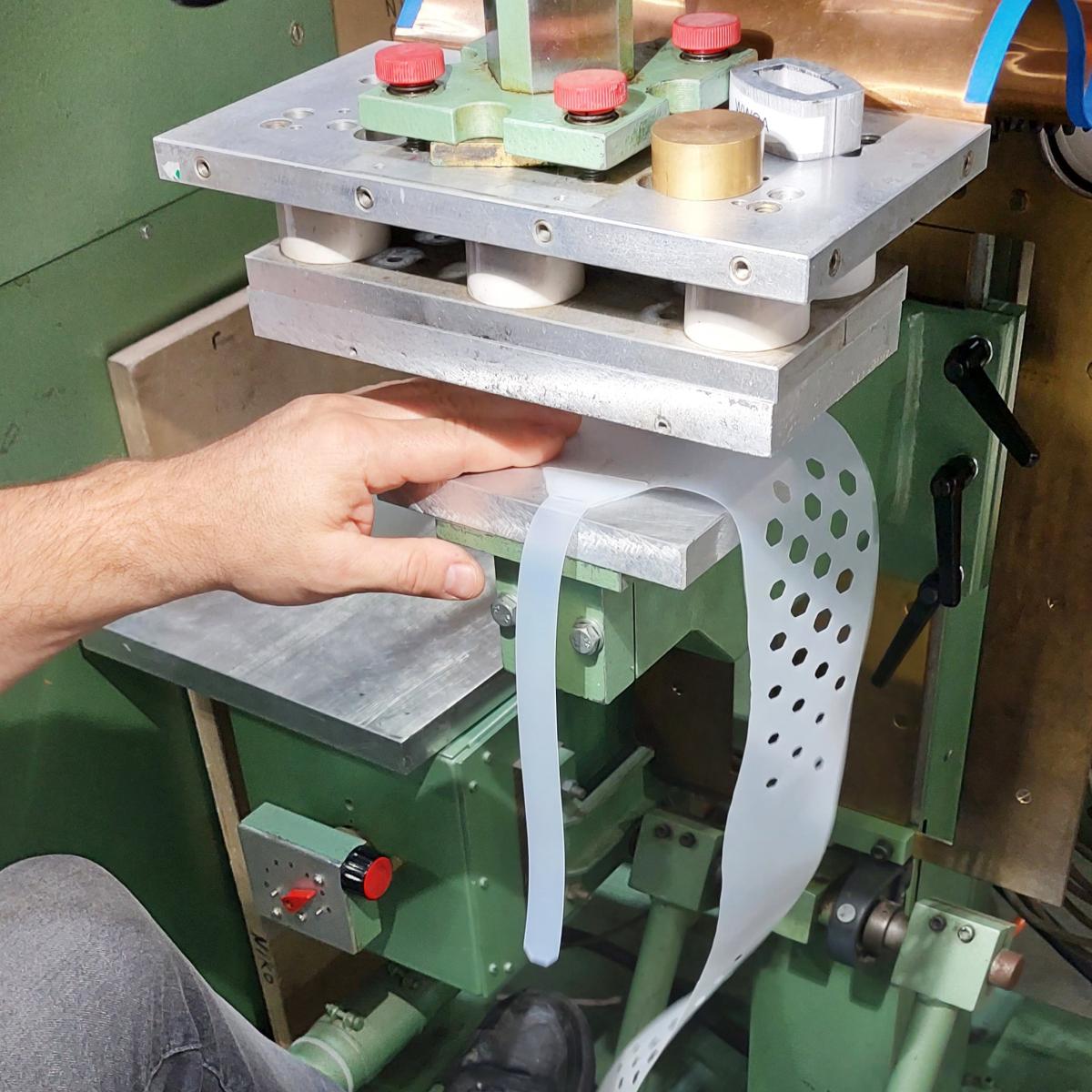

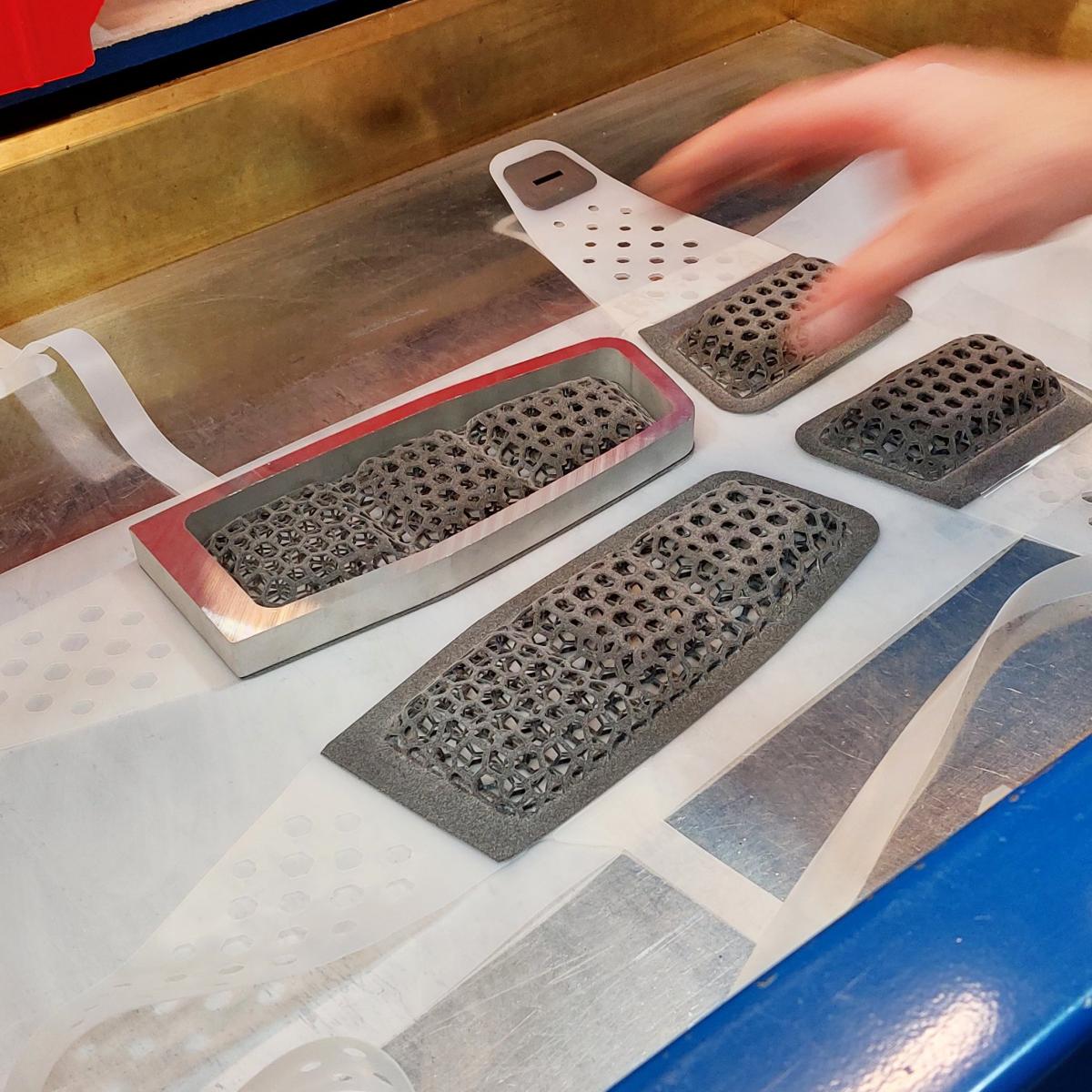

Holistic climate-friendly due to short production routes
A sustainable product design is only half the battle - for VAUDE, the entire production process is important. The Novum 3D was therefore developed and manufactured entirely in Germany. CO2 emissions caused by long transport routes of individual parts are thus reduced to a minimum. This was made possible by the cooperation with the Franconian company Oechsler. As a development partner, the experts in 3D printing assisted us with the design and implementation of the back cushions. The main part of the development and production took place at our climate-neutral company headquartersin Tettnang, southern Germany.
The future of the circular economy with 3D printing technology
Different lattice structures of 3D printing ensure ideal pressure distribution
The Novum 3D is currently being tested in our in-house laboratories in Tettnang. First impressions are very promising - especially regarding comfort and ventilation of the 3D padding. Since it is not just a technical prototype, but a concept study, we will exhibit a showpiece for the first time at the "OutDoor by ISPO" trade fair in Munich in June 2022. Meanwhile, some of the ten specimens will have to show what they can do in practical tests. Afterwards, it will be a matter of taking stock and comparing the advantages in terms of function and sustainability with the higher production costs. At this point, at the latest, it becomes clear that a concept study like the Novum 3D has more to do with science than with science fiction. It will provide us with tangible insights into how and to what extent we can incorporate the new technologies into future products - not just backpacks. Vogt is confident:
"We believe that the future of technical outdoor products lies in recyclability and circular economy, and is compatible with uncompromising performance."
kai Vogt explains. After all, sewing thread alone would be another material that would have to be separated before it could be recycled by type. This removes one of the biggest hurdles that have stood in the way of genuine recycling of outdoor equipment to date. Backpacks are usually made of a variety of materials that can only be separated from each other with immense effort or practically not at all: different materials yarns, tapes, foams, metal and plastic parts. Often, materials are used that even individually could not be recycled to the same quality. The Novum 3D, on the other hand, consists almost entirely of TPU. We are talking about a mono-material backpack. For the sake of the environment, the main material is undyed. However, all non-TPU parts, such as the aluminum back stays, can be removed very easily.
A utopia? With the Novum 3D, the vision becomes tangible reality.
Backpacks with AEROFLEX 3D back system:





